Meet the course manager: Richard Johnstone
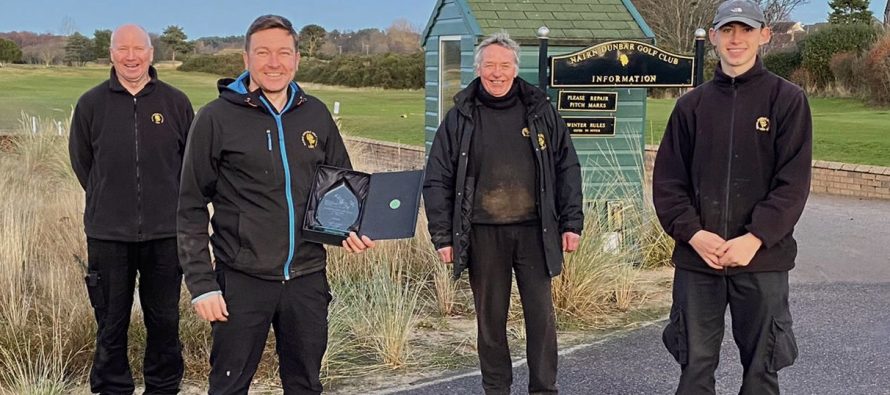
Related Articles
A programme of reduced fertiliser input and irrigation at Nairn Dunbar in Scotland has seen fine turf return to the venue, and it win environmental rewards as a result.
Situated behind the rugged sand dunes of Nairn’s East Beach, Nairn Dunbar, which opened in the 19th century, offers an unrivalled experience for golfers of all levels. With views across the Moray Firth to the Black Isle and beyond to the mountains of Sutherland as well as inland to the neighbouring Cawdor Hills, the course requires both guile and skill to negotiate its varied challenges.
We speak to its course manager, Richard Johnstone, about maintaining the venue, particularly during the pandemic, and why it now has a reputation for environmental excellence.
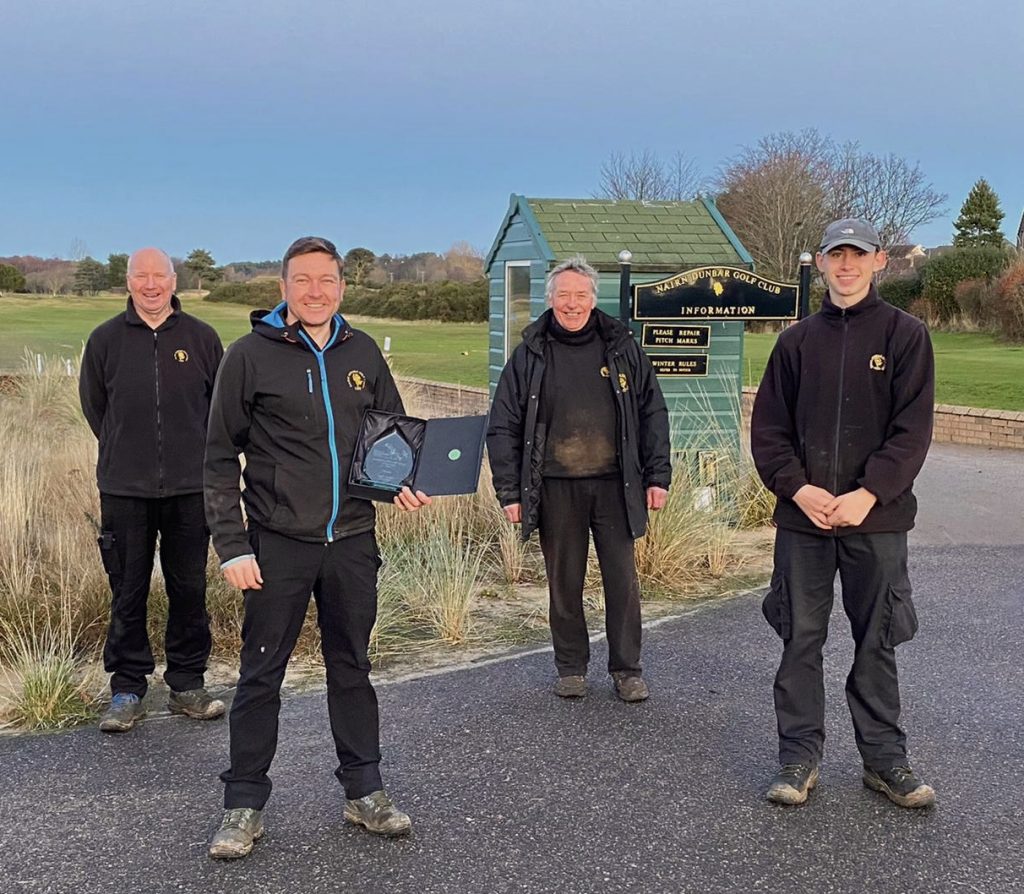
Hi Richard. Can you tell us how you ended up as course manager at Nairn Dunbar?
I was lucky enough to be offered the opportunity to join the greenkeeping team at Nairn Dunbar Golf Club in the summer of 2000. After initially completing SVQ level 2 sportsturf, Pa1 and pa6 spraying certificates as part of my apprenticeship through SRUC Elmwood college, I have been determined to continue with further career development opportunities and have now completed a considerable list of greenkeeping qualifications such as SVQ level 3 sportsturf, Pa2 spraying certificate, Level 3 irrigation, first aid, health and safety, future turf managers initiative, CMAE MDP1 and most recently with the help of The R&A scholarship, the completion of both the HNC and HND in golf course management. Although I have spent over 20 years working at the same club my determination to continually develop both my practical and technical skills have provided me with the tools needed to become a successful course manager, a position which I have held since February 2016. Learning never stops and I am always setting myself new targets, some of which are the CMAE club management diploma, master greenkeeper certificate and an FdSc in sportsturf management.
Can you tell us about your greenkeeping team?
Currently we are working as a team of four which consists of course manager – Richard Johnstone, assistant greenkeeper – Graeme Robbins, assistant greenkeeper – Michael McInnes and apprentice greenkeeper – Ryan Knox. (Although we will be returning to a full team of six when deputy course manager Craig Mackay and apprentice greenkeeper Nathan Grant, start with us in mid-March).
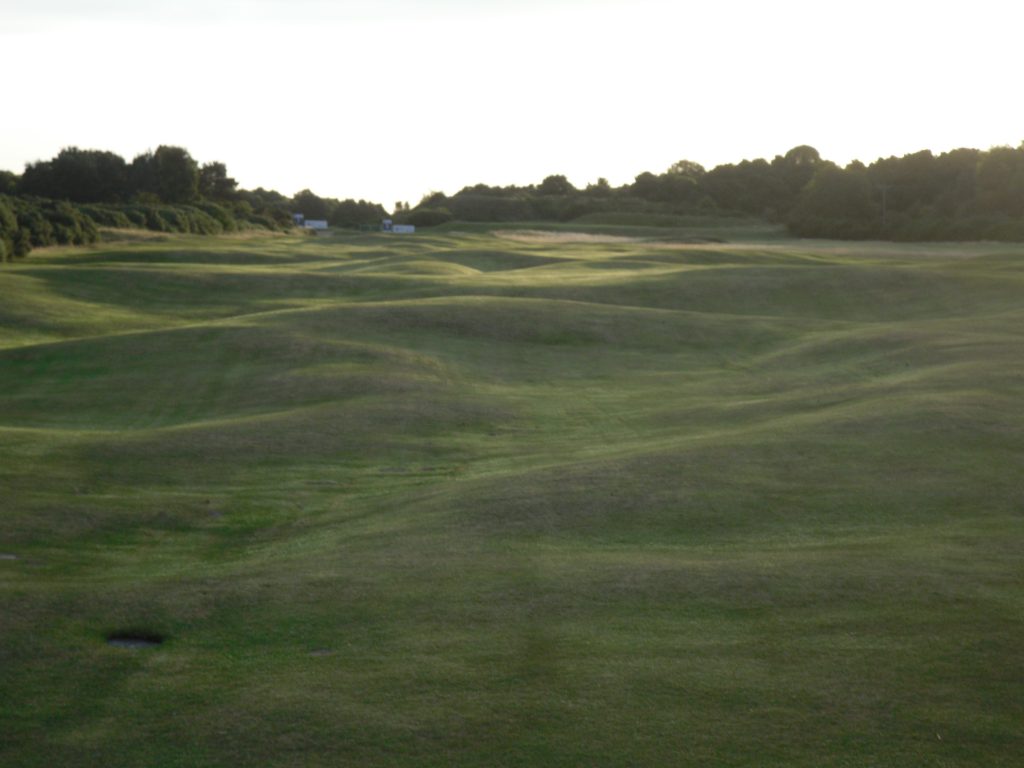
What would you say are the biggest challenges you currently face and how do these impact you in your current role?
The biggest challenge faced at Nairn Dunbar is managing the expectations of our members and guests who want us to have our championship links golf course performing at its best all year round. This has been difficult with reduced staff levels, reduced budgets, an ageing fleet of machinery and the extreme weather patterns we have been experiencing of late.
Congratulations to you and the team on winning the ‘Environmental Golf Course of the Year’ award recently. What motivated you to enter the Golf Environmental Awards?
I have always followed the awards closely but we were not in a place where we could have been considered until I was appointed as golf course manager in 2016 and was able to introduce environmentally sound management practices. It took time for these changes to have an impact and it was not until 2020, our second attempt at entering the awards that our efforts were being really noticed, both through the application process and course visit from STRI ecologist Rowan Rumball. Having been selected as finalists on only our second year of entering it was our intention to take all the information and advice given through visits from both Rowan and ecologist James Hutchinson from BIGGA to go one step further in 2021. We have been able to build extremely close relationships with STRI, R&A, BIGGA, SNH, Forestry and Land Scotland and the RSPB who have helped us manage the many different habitats within our 135-acre site. Our small team has worked hard to restore the true running links style characteristics of the course by unveiling the natural topography through the introduction of a rough, gorse and tree management plan. Alongside huge reductions in fertiliser, water and chemical applications this has allowed the native grasses and wildflowers to flourish throughout our site. By communicating regularly with the membership and local community we have been able to share how we are doing our best to provide optimum playing conditions while working in harmony with the conservation of our natural environment using economically sound and socially responsible management.
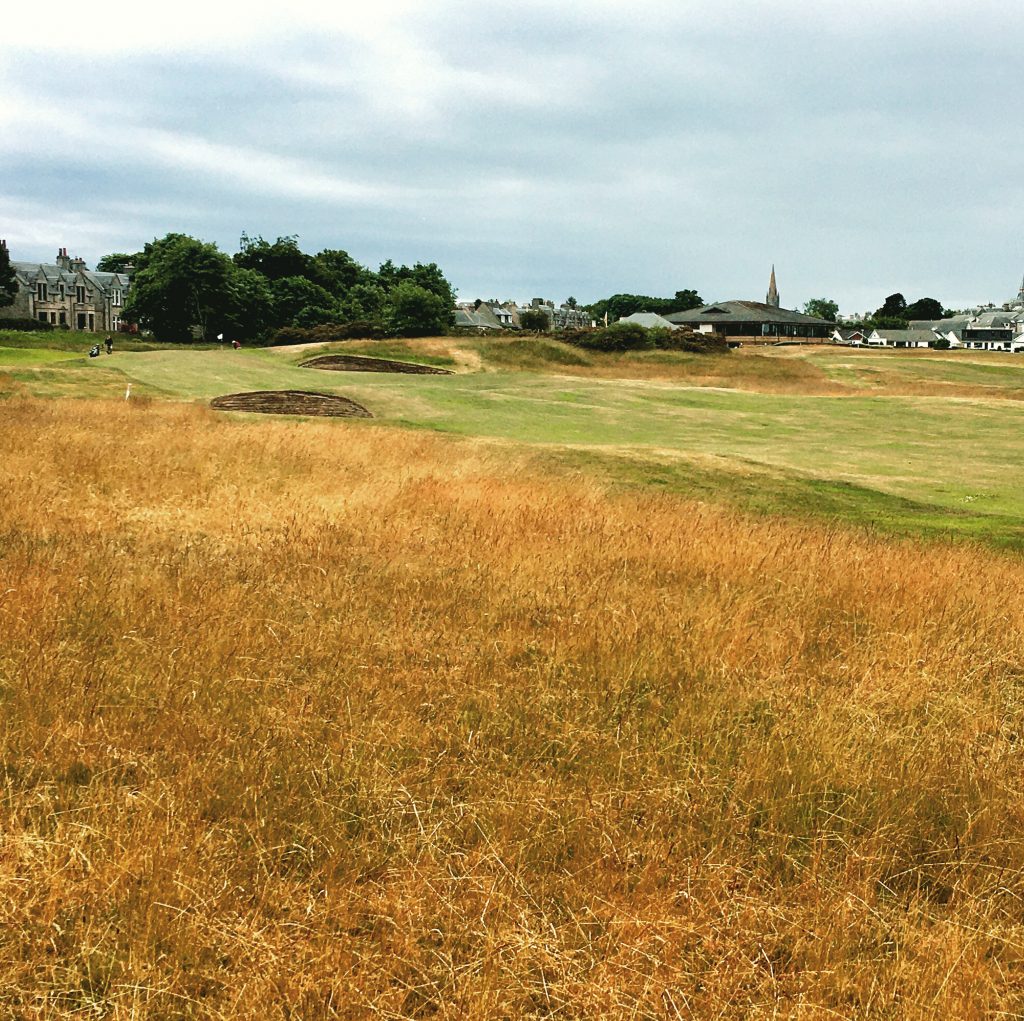
Nairn Dunbar is also on course to be GEO certified. What decided you to pursue this certification?
We are currently working through the GEO on a course programme which has allowed us to review and evaluate our current performance against industry best practices. Finding the time over the last year has been difficult but it is our intention to become GEO certified after we have integrated sustainability across all operations within our club. We are hoping to establish Nairn Dunbar as an environmental leader within our local community and communicate how our well managed club is providing many environmental benefits. Our club is an integral part of the local community and it gives us the opportunity to lead by example and raise sustainability awareness
What drives you to achieve the high standards that you deliver across the course and what actions do you undertake to continue your personal development and learning?
Like many others within the industry, I am self-motivated with a keen eye for detail and a determination to exceed expectations. Although I set the standards of course conditioning that we look to achieve on a daily basis, it is a team effort and without my dedicated team by my side this could not be achieved. I am continually looking at ways in which me and the team can improve and develop and encourage them to record their activity in the BIGGA CPD lifetime transcript. I also have a close relationship with many other like minded professionals within the industry who I can always rely on for advice.
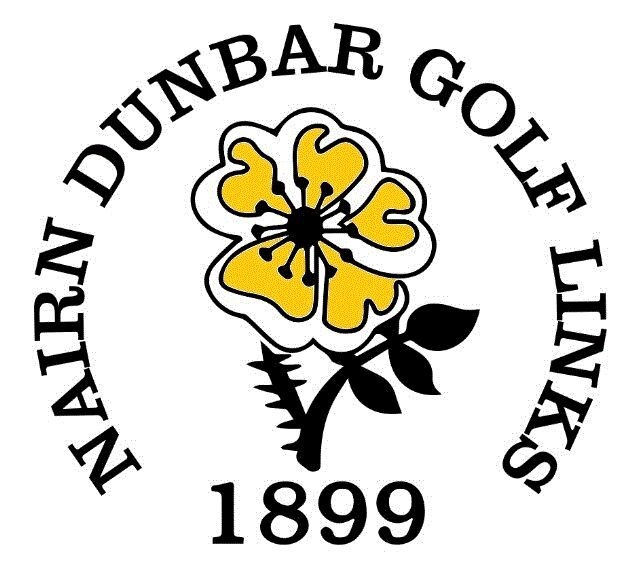
You took the decision to reduce chemical applications to the course. What were the reasons and what reductions have you made?
Our focus was aimed at re-establishing the fine textured turf that once dominated this links before excessive fertiliser and irrigation applications caused an unfortunate botanical change. By reducing organic matter, followed by a sustained overseeding programme, we have become much less reliant on chemicals. The use of sand topdressing combined with increased sunlight and air movement has not only firmed up our surfaces but it has also drastically reduced earthworm casting. The savings achieved through the use of cultural practices have allowed us to introduce a full wetting agent programme on all surfaces which will help with the establishment of the fine leaved grasses and consistency of how the turf performs throughout the year.
Participating in the Golf Environments Awards has contributed to you and the team working to restore and reveal the true links features of Nairn Dunbar. What are the features that can now easily be seen and that you are most proud of?
The restoration project which we introduced in 2016 has been extremely successful and we have received some fantastic recognition from members and guests for the work carried out. As previously mentioned, a rough, gorse and tree management plan was put in place to help us unveil the natural topography which had been completely lost to invasive species. In some places our 122-year-old links site had become almost parkland like but with the backing of our management and members we have completely transformed the look of the course. The course now displays many natural dune systems and by removing sufficient nutrients from our soil profile, the broad-leaved species have declined and allowed the opportunistic fine leaved grasses to colonise. We are now left with some ecological, long, open and wispy rough which in turn gives the course some definition, allowing members / visitors to find their balls and help speed up play.
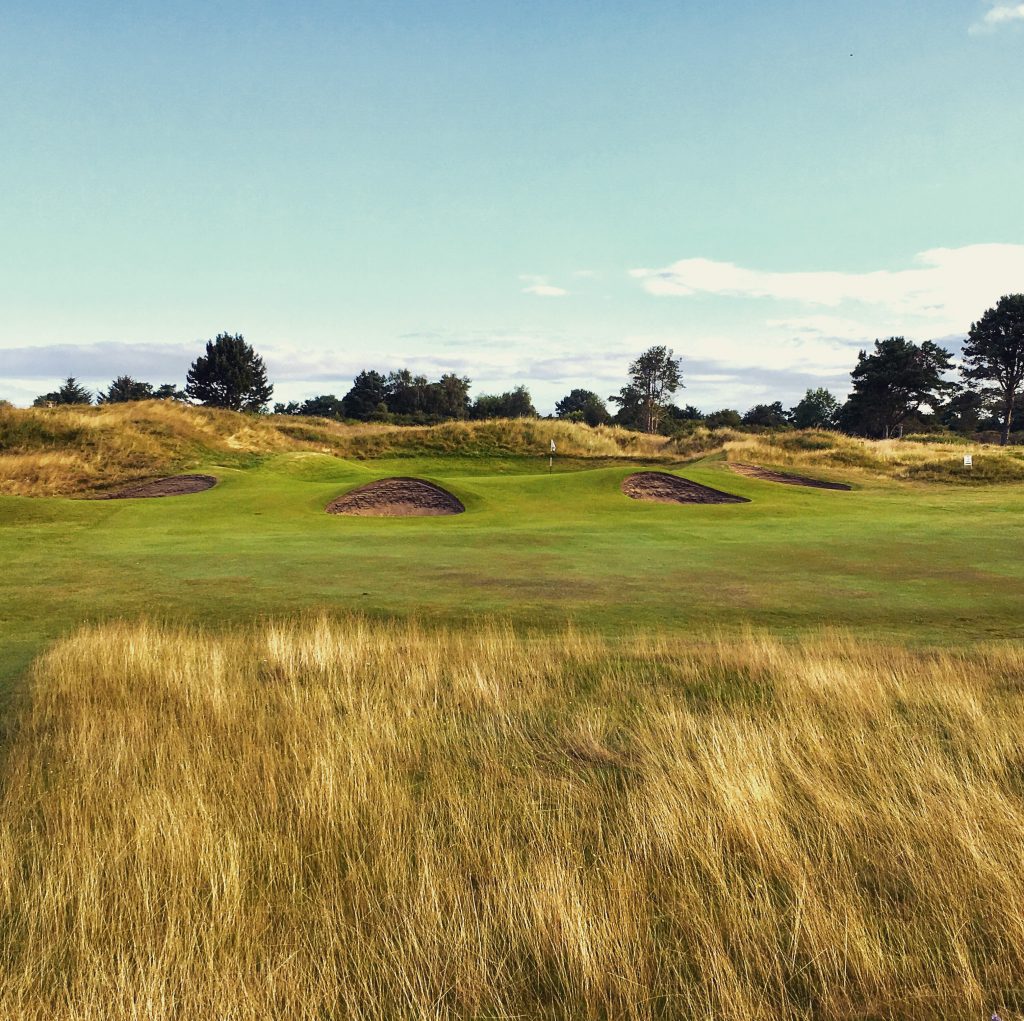
You said the further up the ladder you go, you can find yourself becoming more distant from the daily greenkeeping work. How do you ensure you don’t lose touch with your roots and what do you do to keep close to the pulse and needs of the courses?
I am lucky that my role as a course manager involves a variety of tasks such as managing staff, time, materials and financial resources. Although part of it does involve some time spent behind a computer screen, I still spend the majority of my time out on the course with the team. I feel it is essential that I am out on the course regularly to make sure the surfaces are performing at their best or if any immediate action will be needed to help them perform better. I also trust my team to deliver the standards that have been set and to report back anything that they think does not look right so we can rectify as soon as possible.
You’ve recently invested in John Deere. What do you see as the major benefits of the new machines and when using them on the course?
We have recently invested in three new pieces of John Deere hybrid cutting equipment after it was evident that some of our ageing equipment was becoming unreliable and costing us too much money to repair. In late 2020 we set out to demo different cutting equipment from three different suppliers to ensure we invested in the best piece of equipment to match our needs. All members of staff had the opportunity to trial all the machinery and feedback forms were used to grade the performance of each machine. We found that the John Deere equipment came out on top on almost all aspects including comfort, ease of use, quality of cut, lower operating costs, noise reduction and ease of maintenance.
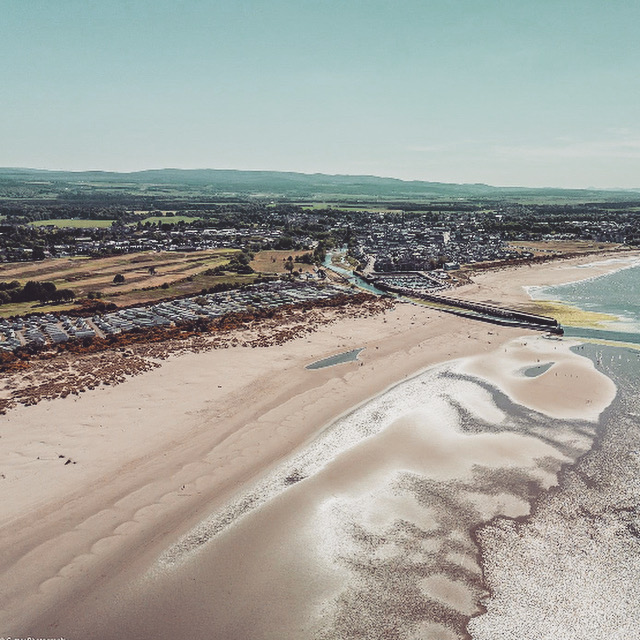
The advancement and use of technology for the course manager has leaped over the past 12 years. What are your views towards the use of data and technology and how are you and your team embracing it to drive the management of the course?
There has been a huge advancement in technology in the last 12 years, most notably the introduction of hybrid and electric machinery and irrigation systems that can be controlled via smartphones. We do a great deal of data collection at Nairn Dunbar as we feel it is an essential part of the decision-making process when managing our surfaces and machinery. A key part of planning when management practises can be carried out is weather based, so as well as checking the forecast daily we also keep a lot of this data from day to day like high / low temperatures, rainfall, evapotranspiration, wind speeds, soil temperature and growth degree days. We also record the amount of irrigation applied, moisture levels, nutrient applications and sand applications. This allows us to track when our surfaces are performing at their best and try and replicate those management practices to provide consistency throughout the year. Fuel usage and machinery repair costs are also kept, which allows me to provide reports for the management and committee showing which machine is costing us the most to run and a clear rationale for any upgrades that are needed.
Nairn Dunbar, together with Nairn Golf Club, will host the 2021 Amateur Championship in June. What preparation and programmes will you set in place in the lead up to the event and how will you manage the course throughout the tournament?
Having hosted The Boys Amateur Championship, The PGA Northern Open and The North of Scotland Amateur championship over the last three years, we have had plenty experience preparing the course for major championship events. We have also been working closely with The R&A agronomy team over the last two years in preparation for the event. Having visited some of the other amateur championship venue hosts over the last two years to research how they prepared for the event it also gave me the opportunity to build a close relationship with the course managers who have given me lots of advice leading up to the event. It is our intention to have most of the preparation completed a week before the tournament starts. As the tournament support arrives, our focus will then turn to presentation ‘polishing’ and ensure the surfaces are performing at their best ready to host the best 288 amateur golfers in the world.
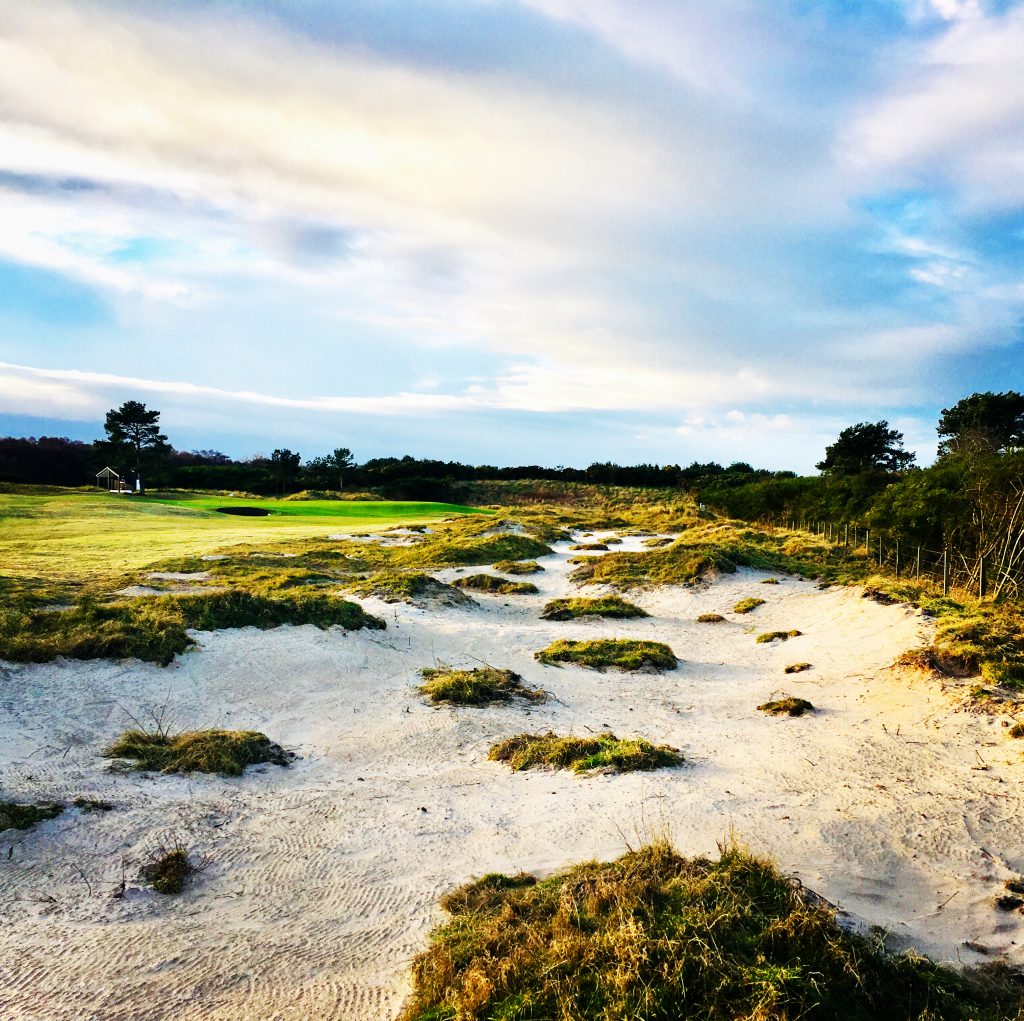
You and the team have been undertaking bunker renovations. How many bunkers does the course currently have, what are you plans and how’s it all looking so far?
In total the course has 58 bunkers with another three located on our practice chipping green. The number of bunkers we reconstruct every year depends on the condition of the bunkers and the size of other reconstruction projects we undertake. We generally reconstruct between eight and 12 every year on a rotational basis and this year was no different. We are slightly behind schedule with bunker reconstruction due to the prolonged spell of freezing temperatures. With most of the other work now completed, the bunker reconstruction is now our main focus.
Many courses are struggling to recruit the new generation of greenkeepers. What are your views on this and are you currently looking to recruit staff for Nairn Dunbar?
We have recently gone through the process of recruiting a deputy course manager and an apprentice greenkeeper which will take our team up to six full time staff by the middle of March. It was encouraging to see so many applications to our advertisements with a total of 17 received for the deputy course manager position and another 58 for the apprentice. Nairn Dunbar has always been a very supportive employer when it comes to further education and training which I feel has contributed to improved performance, satisfaction and morale. All of the staff are encouraged to continually develop which ensures they have the skills and knowledge to produce the high standards expected on a daily basis. With our current team of four accumulating over 112 years’ service, it proves that the club has created the right culture to be able to retain talented and motivated employees who feel valued within the workplace. Succession planning will play an important role over the next few years as we continue to develop new talent.
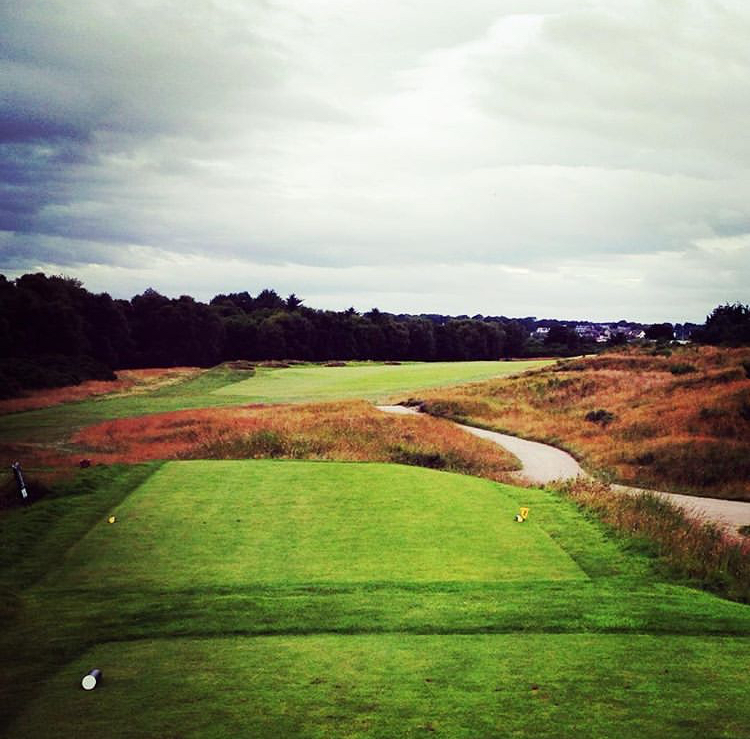
You’re running a gorse and tree management programme. What exactly have you been doing, why and what results have you seen to date?
Pre 1970, young trees and gorse would have naturally been removed through disturbance created from deer or sheep, so the introduction of these management programmes was introduced in 2016 to simply mimic this process. It was evident that areas of dense woodland were causing a lack of sunlight and air movement to our surfaces, a perfect environment for non-native grasses and disease outbreaks such as fusarium. Tree roots were also causing a risk of damage to mower blades, blocking drainage pipes and robbing the turf of vital nutrients. We had also become aware that some of the dune systems on site had become overgrown with vegetation meaning many of the native grasses and wildflowers species had been lost. With all the extra plant growth the sand had also become enriched with nutrients too, encouraging non-native plant growth and stabilisation. With sand dunes now one of the most at-risk habitats in Europe it was essential we introduced the steps necessary in order to prevent a total loss of biodiversity at Nairn Dunbar. To create healthier and more ecologically beneficial strands of gorse, coppicing was used and where it had become leggy and degenerate, we chose to completely remove, creating bare sand habitats, especially in areas where it was negatively impacting on play. The results and feedback that we have received regarding the work thus far have been fantastic and with much of the dune habitat now restored it is providing a true test of links golf.
Nairn Dunbar recently upgraded the irrigation system. What system did you opt to install?
In May 2019 we replaced all decoders on site and installed a Rainbird Stratus LT central control system combined with the MI Series Mobile Controller, allowing remote access to our central control system and providing remote irrigation control via a smartphone. We chose this system as it provided us with the many features we were looking for in an irrigation system such as a built-in ‘Flo-Manager’ that automatically distributes and limits flow within the system, to maintain maximum system operating efficiency, a visual indication of all areas being irrigated, automatic rain shutdown with the integration of a rain sensor and daily and seasonal logs for record keeping to ensure compliance regarding water usage. The state-of-the-art system that replaced a 34 year old Watermation controller has enabled us to reduce run times and water usage by over 50 percent.
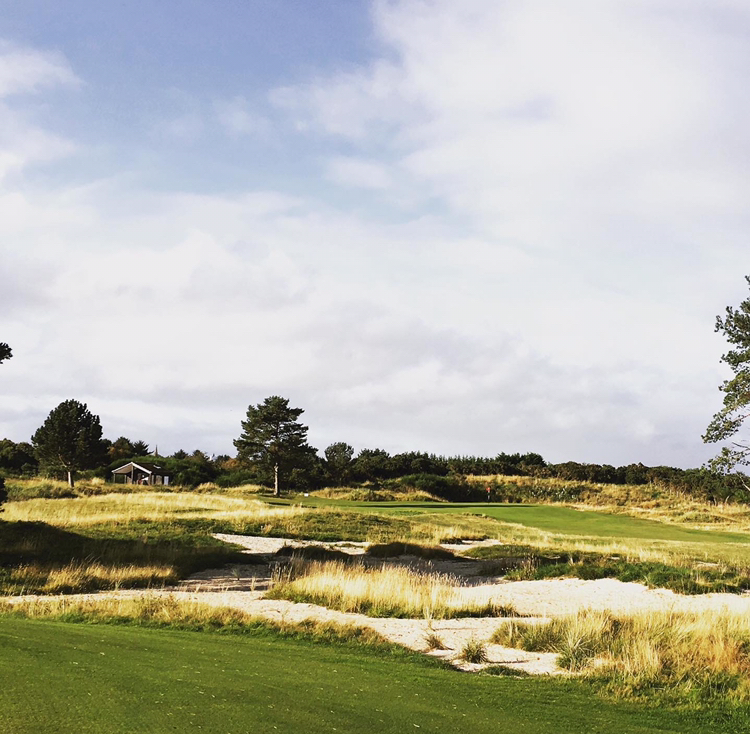
The pressures on the course manager to deliver a better product are growing year on year and the level of professionalism is rising with this. What do you think are the qualities now needed to meet the requirements and demands of golfers by someone in your position and how does this help contribute to the business of golf?
The modern course manager carries a huge weight on their shoulders, being responsible for the daily maintenance and presentation of a million-pound asset. To keep up to date in our fast paced industry it is essential that we continue to grow by challenging ourselves and work on any weaknesses. Creative and innovative thinking play a huge role when leading a team to deliver high standards of presentation on a daily basis. I do feel the most important quality is to be able to communicate regularly with staff, management committee, members, guests and the local community. There’s no other person who spends more time on the course than a course manager and engaging with these people helps explain the rationale behind the decisions being made on the course. With expectations to deliver perfect conditions 365 days a year it is essential that communication is used effectively to educate players that every decision our professional team makes is for the benefit of the course.
What currently gives you the greatest satisfaction from your job and how do you feel daily when you are moving around Nairn Dunbar looking at what you and the team have achieved?
Enjoying going to work on a daily basis is a vital component of job satisfaction. This combined with mentoring a small team to continually improve and develop while providing a true championship test of golf for players of all abilities. Although we have played a part in hosting several major championships over the last few years, our team’s biggest achievement has been the continual improvement of our surfaces through the use of sustainable management practices to consistently provide a fun, firm and fast running golf course for our members.
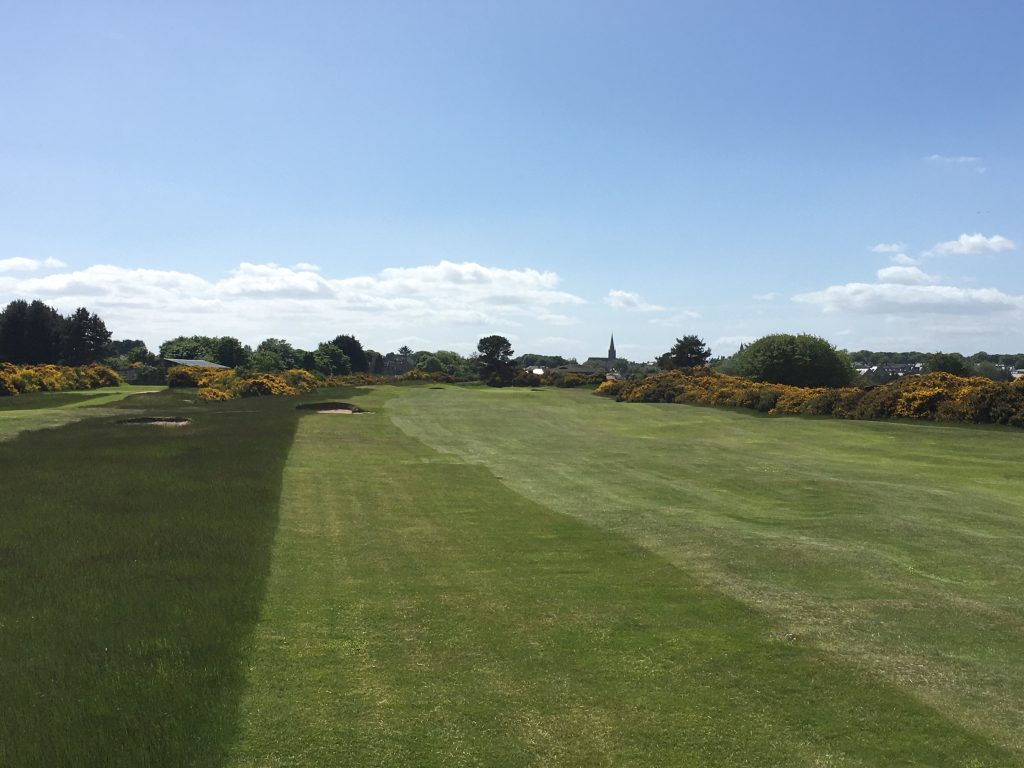
You and the team communicate to the members on a regular basis. What platforms do you use?
Communicating effectively has become increasingly important and it makes running our club a lot easier, helping to engage with and motivate players, members and volunteers. Our dedicated golf course blog which won the GCI best golf course blog in 2018 is our main channel of communication and is linked to the club’s website. Technology has also helped enormously with the use of various social media channels such as Facebook, Twitter, Instagram and YouTube to interact with our target audience. In addition to the long-standing club newsletter and notice boards we have introduced member information nights where we provide PowerPoint presentations to over 100 members at a time. We intend to introduce course walks and visits to our maintenance facility for small groups of members which will allow us to build stronger connections, credibility and trust. Through a combination of all of the above it has allowed us to share why certain tasks are carried out on the course, training and development of staff, surface performance data, course conditioning updates, environmental and ecological matters.
With your many years experience, what advice would you give to youngsters starting out and wanting to pursue a career in the profession?
Never stop learning. There are so many opportunities within the turf industry whether it be academic education, short courses, seminars, webinars, podcasts or volunteering. BIGGA has helped me so much during my 20 years within the industry through attendance at local and national educational events, joining the regional board, TPC Sawgrass volunteer programme, Bernhard Delegation, FTMI, refund of fees scheme, Jacobsen scholarship, BS Topsoil scholarship and the CPD scheme. Being part of such a close-knit profession has assisted in my progression and gave me opportunities to learn and develop all over the world. I would also encourage those new in the profession to continually ask questions and don’t be scared to approach other industry professionals to ask for advice.
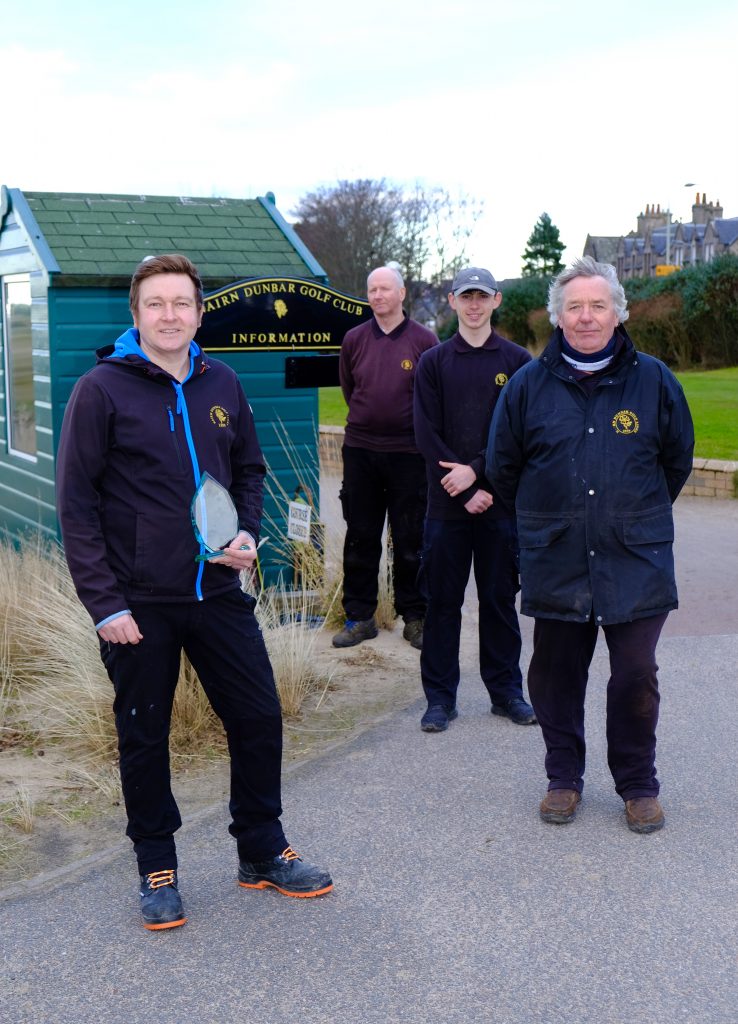
What changes do you think need to be made to benefit the industry sector and profession of the greenkeeper?
It is essential we continue to promote the professionalism of the greenkeeping industry through the combined help of all the industry organisations and help dispel the myth we just cut grass. Many people do not realise the amount of highly qualified professionals there are within our industry who have worked hard to get to the top of their profession. Increased communication of the pressures faced by greenkeeping teams around the world due to reduced budgets, lack of resources, ageing machinery, withdrawal of chemicals and how unrealistic expectations are raising concerns over mental health within our industry.

























